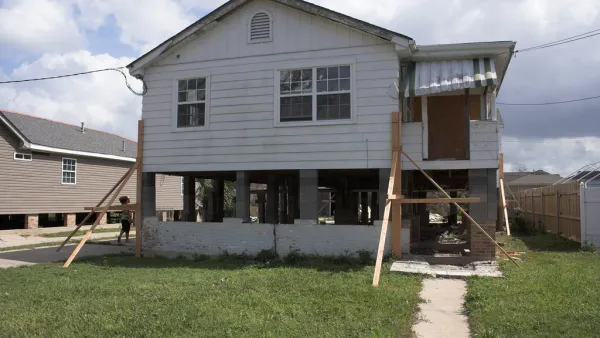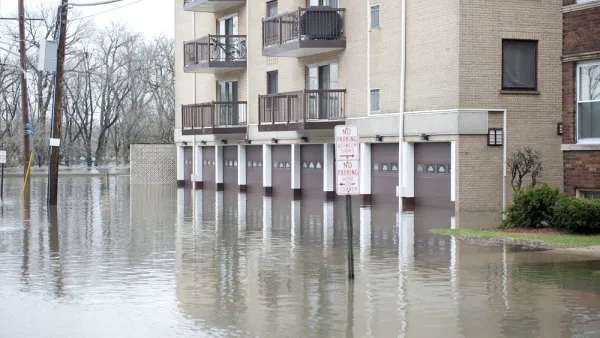Risk-management experts are seeking creative ways to finance resilience investments that prevent damage from natural disasters. Insurance markets, with their direct stake in protecting homes and businesses, can be key partners in this effort.
Broadly speaking, the world of insurance can be divided into two different sectors: private insurance companies and government-run programs. In the United States, the latter have long enticed policyholders to embrace resilience through a simple reward system: make risk-reducing upgrades to your building, and we’ll lower your insurance rates. This mechanism underlies much of the thinking about the power of insurance markets to drive resilience investments. Consider the National Flood Insurance Program (NFIP), America’s federal flood-insurance provider. Established in 1968, and today administered by the Federal Emergency Management Agency (FEMA), the NFIP partners with more than 80 private insurers to provide insurance to property owners if their communities agree to adopt ordinances that reduce the risk of flooding. For the NFIP, measures such as elevating the lowest floor above the base flood elevation qualify homeowners for reduced rates. Strategies like these can be hugely effective. As detailed in a 2015 report by the nonprofit Enterprise Community Partners, one multifamily building in Hoboken, New Jersey, installed floodwater vents and elevated the first floor to ground level. The $25,000 retrofit reduced the cost of flood insurance by 83%, with a return on investment of less than three years. (The owner originally paid $12,000 for $300,000 worth of coverage; after the retrofit, the premium dropped to $2,000 for $820,000 worth of coverage.)
FULL STORY: Can insurance markets jump start resilience?

National Parks Layoffs Will Cause Communities to Lose Billions
Thousands of essential park workers were laid off this week, just before the busy spring break season.

Retro-silient?: America’s First “Eco-burb,” The Woodlands Turns 50
A master-planned community north of Houston offers lessons on green infrastructure and resilient design, but falls short of its founder’s lofty affordability and walkability goals.

Delivering for America Plan Will Downgrade Mail Service in at Least 49.5 Percent of Zip Codes
Republican and Democrat lawmakers criticize the plan for its disproportionate negative impact on rural communities.

Test News Post 1
This is a summary

Test News Headline 46
Test for the image on the front page.

Balancing Bombs and Butterflies: How the National Guard Protects a Rare Species
The National Guard at Fort Indiantown Gap uses GIS technology and land management strategies to balance military training with conservation efforts, ensuring the survival of the rare eastern regal fritillary butterfly.
Urban Design for Planners 1: Software Tools
This six-course series explores essential urban design concepts using open source software and equips planners with the tools they need to participate fully in the urban design process.
Planning for Universal Design
Learn the tools for implementing Universal Design in planning regulations.
EMC Planning Group, Inc.
Planetizen
Planetizen
Mpact (formerly Rail~Volution)
Great Falls Development Authority, Inc.
HUDs Office of Policy Development and Research
NYU Wagner Graduate School of Public Service





























